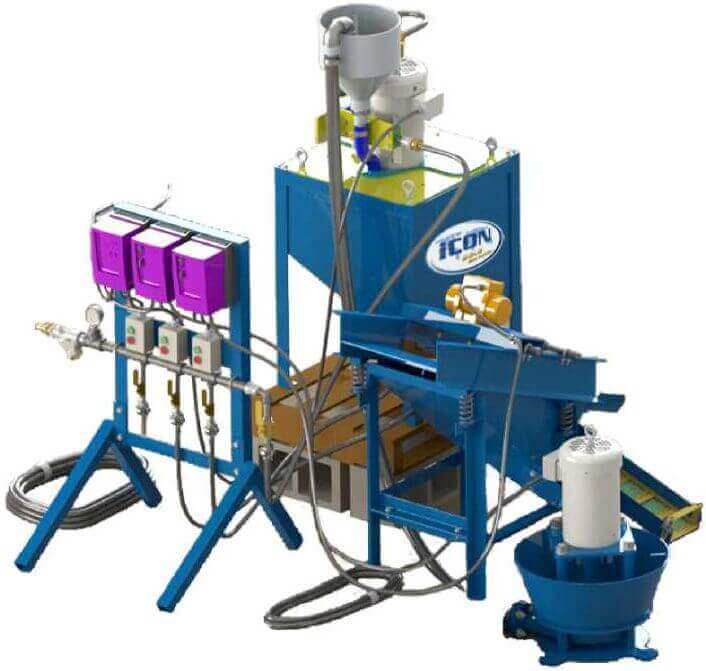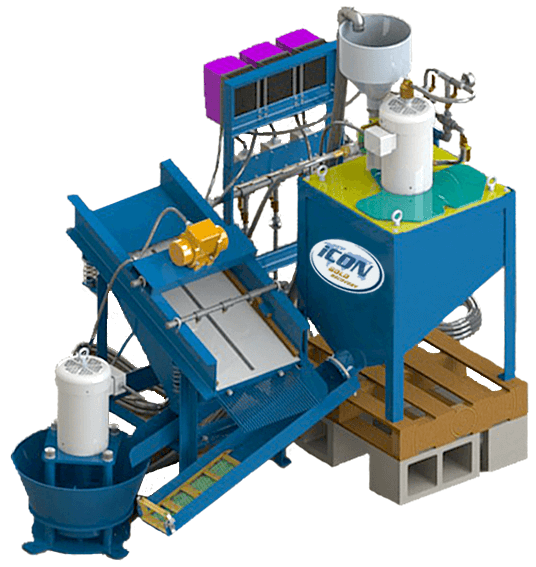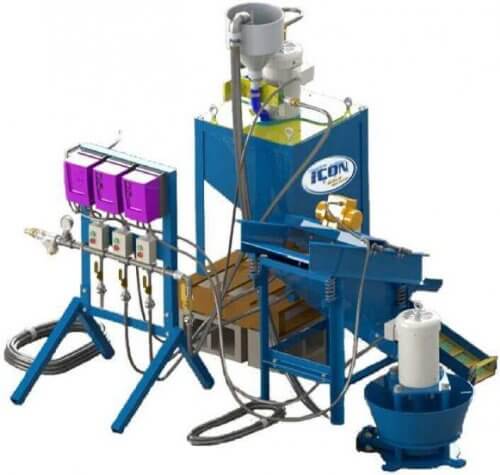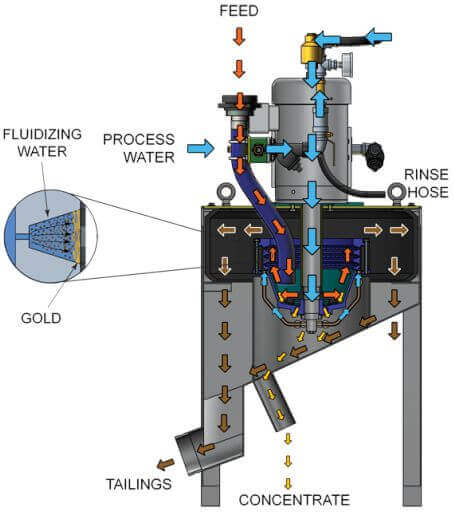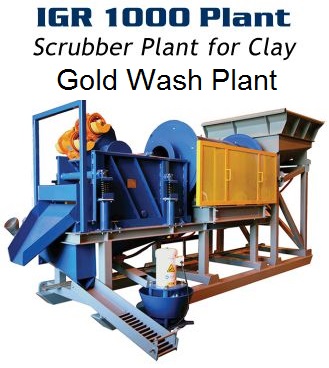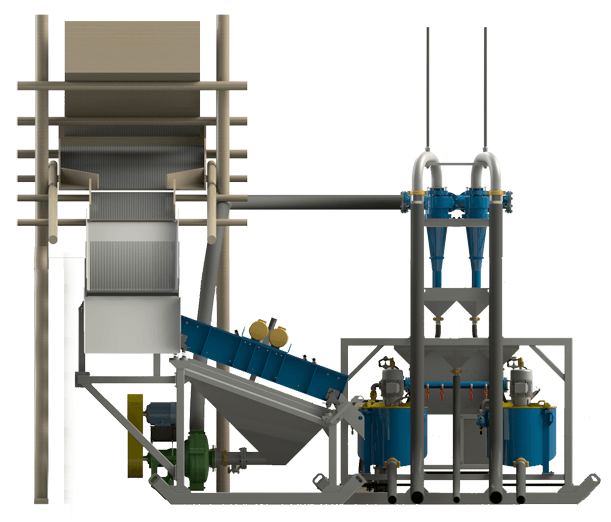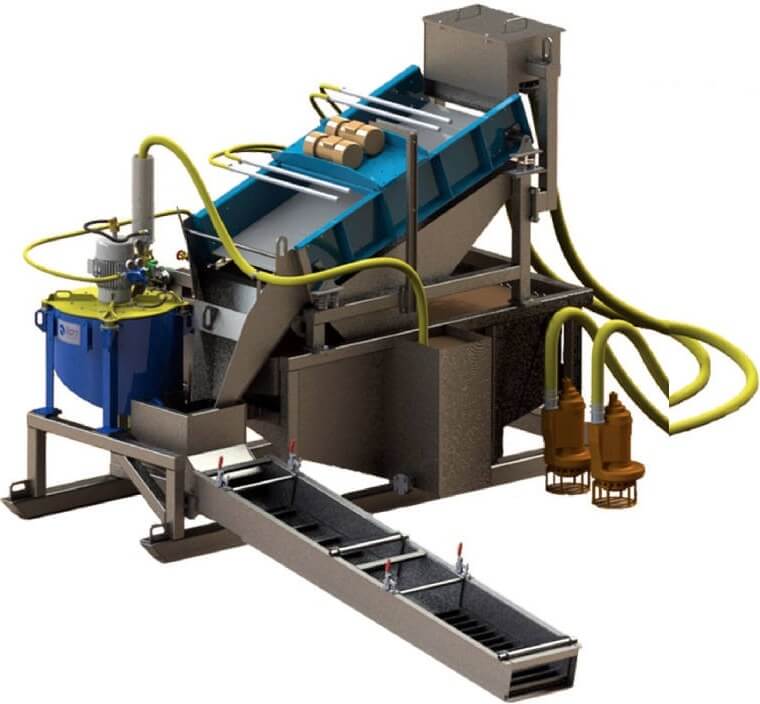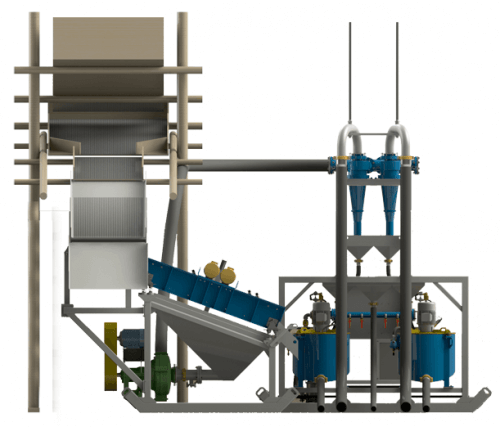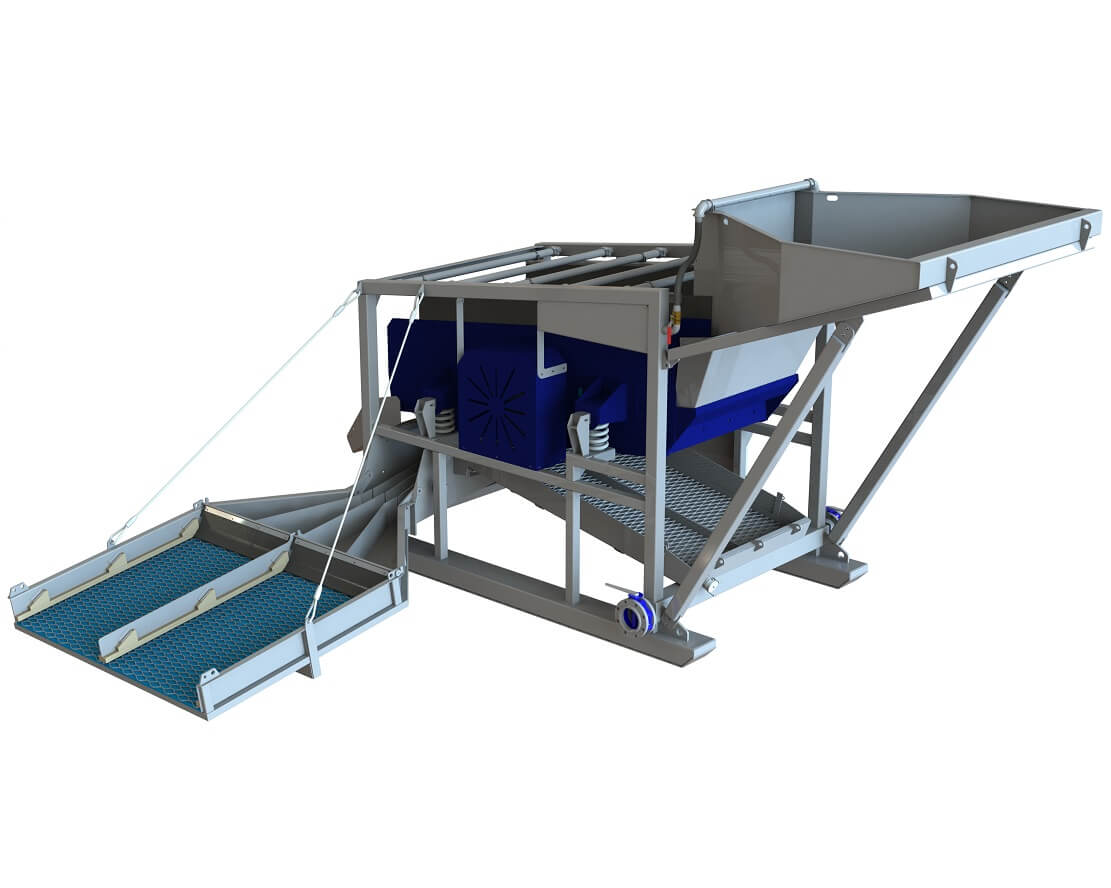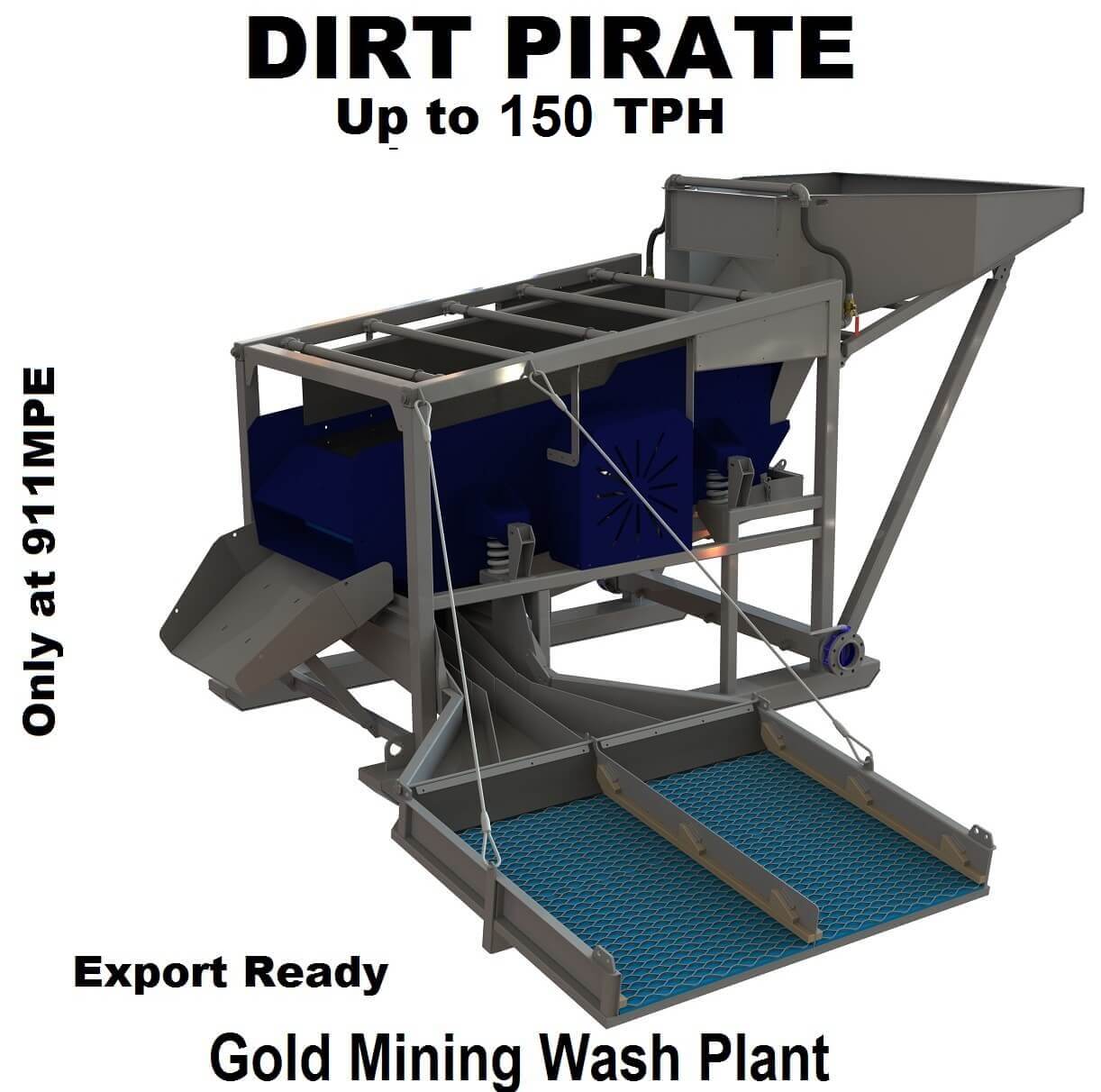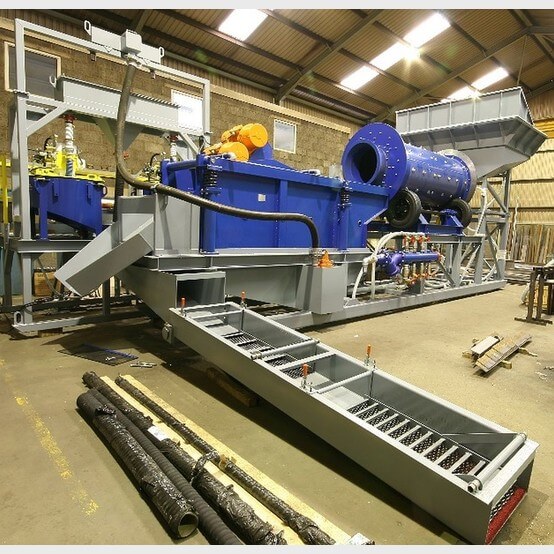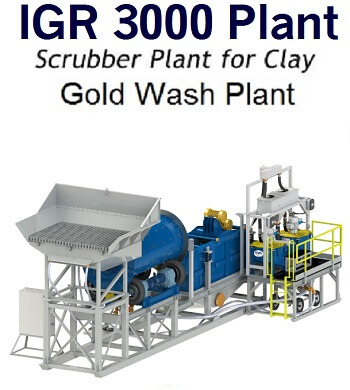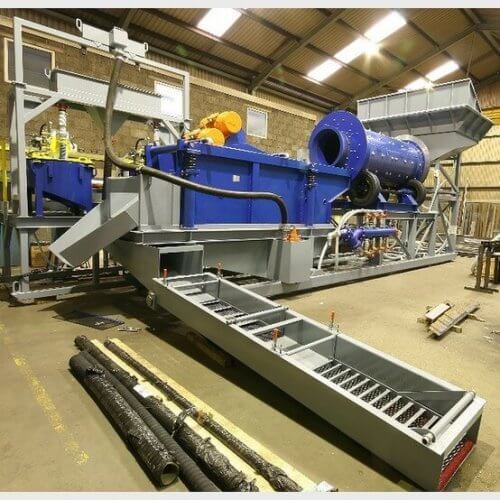Showing all 5 results
Using a gold wash plant, exposed gold-bearing gravels are mined using a bulldozer that pushes and stockpiles the gravel near a wash plant. The stockpiled gold-bearing gravel is then fed into the wash plant by a front-end loader or large backhoe. This practice promotes equipment efficiency by allowing the bulldozer to continue mining while the loader or backhoe feeds the wash plant at a steady rate. When the mined gravel is fed into the wash plant. It is classified by particle size using various stationery or vibrating screens. Classifying gravels provides for more efficient gold recovery, reduced water consumption, and facilitation of mine site rehabilitation, and is practiced by most operators. The oversize material, usually larger than two inches, slides out of the washplant into a pile where it can be moved by a front-end loader or bulldozer. The undersize material and gold-bearing gravel is mixed with water and flows through the sluicebox where the gold and heavy black sands are concentrated. Tailings are gravel, sand, and other materials accumulated at the end of the sluicebox. Tailings are routinely moved away from the sluicebox by a loader or bulldozer.
Gold Wash Plant for Sale
The water that carries the gold-bearing gravel through the sluicebox becomes sediment-laden and turbid. This “muddy” process water flows from the end of the sluicebox over a pile of fresh tailings into a series of settling ponds. These ponds are designed to hold the “muddy” water long enough for the fine sediments to settle. The physical design of the ponds depends upon the amount of water flowing through the system, the sediment characteristics of the gravels being worked, and the physical characteristics of the site. Most mines use a series of small settling ponds to permit more flexible water management. Small ponds are usually easier to build, repair, dean, replace, bypass, and rehabilitate than larger ponds. The use of pre-settling ponds is encouraged. A pre-settling pond is located in the tail race between the sluice and the first settling pond. Sands and other heavy settleable solids are collected here where they are easy to wash.
However, some zero-discharge systems do have occasional discharges, usually due to water seepage through pond dikes. This seepage almost always meets the settleable solids effluent standards, and in most cases, Is probably of better quality than the water discharged from typically operated settling ponds. I.e., less settleable solids and lower turbidity. Carefully designed and Implemented water management practices are required to achieve zero discharge of “muddy water into adjacent streams. Water used in the sluicing process Is pumped from the nearby stream through the washplant and into the settling ponds. Water Intake from the stream Is suspended when the ponds contain adequate water to support continued sluicing operations by recycling pond water to the washplant. In some cases, groundwater seepage Into the settling ponds may be sufficient to eliminate the need for adding stream water to the system. The practice of zero discharge and the recycling of mine water contributes to compliance with federal effluent limitations and State water quality standards.
Placer mining involves equipment ranging from a simple gold pan all the way up to trucks, excavators, and a gold wash plant.This type of gold prospecting usually involves less investment and will consistently yield small amounts of gold, with occasional bonanzas for those who are persistent. If you can learn to reliably return from every trip with decent concentrates, so that over time you fill a five-gallon bucket, and then maybe even a fifty-five-gallon drum, with black sands, magnetite, ilmenite, rare earth elements (REEs), and gold, you will be rewarded in the long run.
Either way, your long-term goals are your own.Very few prospectors are simply in it for the money, looking at this as a way to become a millionaire overnight. Some of us just like to get out of town, camp in the mountains, and enjoy the spirit of the outdoors. Some people like to work up a little sweat and appetite, improve their health, and learn a little. Some of us like to solve problems and run machinery, and enjoy the challenge of keeping a pump going or making sure the sluice is running right. Still others like the wildlife, the scenery, and the historical importance of the Wild West, and bring back their riches as photos and videos. In each case, if you toss in a little gold fever as motivation and stay scientific about your sampling and exploration, you will prosper far and above the value of your recovered material.
Still, a nice payday is always a treat. One sure way to reach that goal is to keep trying. Keep practicing, keep exploring, and keep getting out in the field. Another truism that seems to hold is that the farther away from civilization you get. the better your chances.
How to Start Placer Mining
Guidelines to Starting your own Load/Placer Mine
The development of a load/placer mine and the selection of the proper gravity recovery plant is more difficult than most people realize. Television shows have glamorized mining making it look like anybody can start a mine with little to no experience. What people don’t realize is that mining is a structured engineering discipline taught at university. Just as you should not build your own bridge without knowledge of civil engineering, you should not think becoming a miner is a simple task. If you have no experience in the mining field you need to get educated about the process before you embark on this adventure. We have compiled a basic guide to assist in that process.
The terminology used for this type of mining is often interchanged. The term for the type of deposit under consideration is alluvial. Alluvial deposits are formed when the gold has migrated from its original deposition by weathering to a new location often inactive stream beds or in historic watercourses now overlain by sediments or glacial sediments.
In general Placer Mining is typically the recovery of gold from stream sediments through the use of dredges and sluices or other gravity means. Load mining generally involves the stripping of an overburden layer (soil) to uncover the underlying gravels that contain the gold. These deposits are often mined with mobile equipment and the ore trucked to a gravity treatment plant.
Basic Gold Placer Mining Equipment
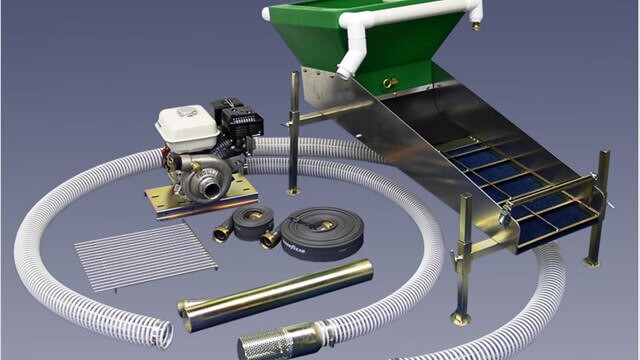 | 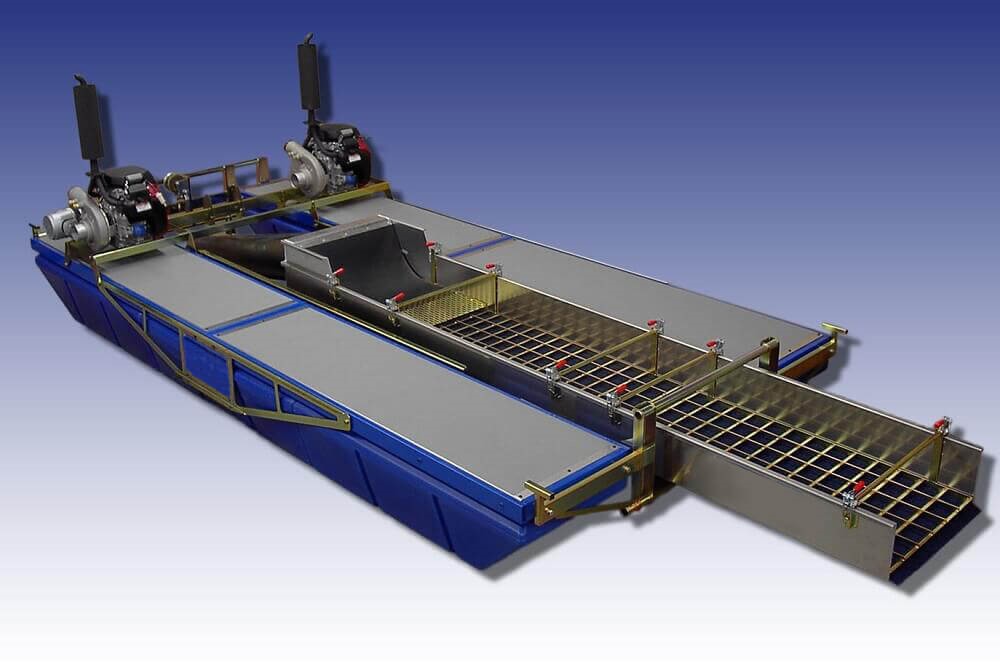 |
Developing A Mine
Things to consider:
1. Permitting – am I allowed to disturb the land – excavating pits, leaving tailings behind, water usage, noise, air quality. In most cases you are not allowed to simply start mining even on your own land without the proper permits.
2. Resource estimation – how much gold is present (grade and tonnage) and what does the deposit look like – over burden depth, ore depth, gravel size. Generally, a placer resource is established by drilling or augering holes around the deposit to delineate the extent of the gold. This is often combined with field gravity recovery testing to provide an estimate of the recoverable grade.
3. Ore Characteristics – is the material easy to treat or are there large boulders present, is the material high in clay content, is the material frozen.
4. Test work – have you conducted any test work or field testing. A gravity recoverable gold test is an important piece of information that allows you to understand how much gold can be recovered.
5. Water usage – gravity systems use a lot of water but the majority of it can be recovered with proper planning. You need the right quantity available to start operations.
6. Mine plan – do you have a mine plan – where are you going to mine first, where is the overburden going to be placed, where are the tailings going to be placed, is the plant going to be in one spot or moved during the mine life, what are the haulage distances. Is this a seasonal operation?
7. Plant selection – there are a large variety of wash plants available and the selection of the proper plant requires analysis of the situation to ensure the correct plant is selected.
Mine Conditions
– Where is your project located? – terrain, climate, infrastructure variables
– How large is your concession? Is a mobile or fixed plant right for this application?
– How many yards/hour (m³/hr or tons per hour) do you want to process?
– How much water do you have available (GPM or m³/hr)?
– Is there power available from the grid or do you required generation?
Plant Characteristics
– Are you looking for a mobile machine that you move regularly or a stationary plant that you haul your ore to?
– What type/size of equipment will you be feeding the plant with (front end loader, dredge pump, other)?
Feed Characteristics
– Ore consistency:
– What is the estimated maximum boulder size (in, mm)?
– Is there significant clay present?
– What is your maximum gold size (mm or um)?
– Is there fine gold present, what is the typical size (um)?
8. Economic Model – Once you have made some initial assumptions you need to develop an economic model (even a basic one) so that you know if the project is viable before you start. No matter what type of project you should try and establish some basic economics unless this is just going to be a small hobby operation where profit does not matter. There are a lot of assumptions required to develop the model and you need to be realistic in your assessment. Add contingencies for operating costs of 10-15% and 20-30% for capital costs.
- Revenue – how much gold can be recovered
o tonnage processed per period
o recovered grade
o gold price - Operating costs – what does it cost to recover this gold
o Mining Costs – overburden stripping, excavation, haulage, dewatering, labor, lease or buy
o Processing Cost – plant spares, labor, water, power generation
o Camp Costs – travel, lodging, food
o Gold Transport, Security, Refining, and Insurance costs
o G&A Costs – permitting, supervisors, legal
o Concession Costs – purchase price or lease fees
o Royalties – third-party payments to property owners or governments - Capital Costs – what equipment needs to be purchased to make this project successful
o Mining Equipment – dredge, excavators, bulldozers, haul trucks, front end loaders
o Process Equipment – what kind of plant is right for the throughput and ore characteristics
o Ancillary Equipment – water pumps, electricity generation, light vehicles
o Camp Cost - Cash Flow – develop an annual cash flow based on the above items and determine the pretax net present value and internal rate of return. Don’t forget about tax as a next step and also consider exchange rates and profit repatriation for foreign projects.
- Optimize – once you have the basic model complete you should go through it to see how you can maximize your profit – adjust the tonnage (which changes the capital and operating costs), adjust the cutoff grade don’t trade dollars for the sake of gold production (recreational mining) – if it does not make money leave it behind if you can, consider the haulage distances and moving the plant….
911Metallurgist can help you develop a successful mine. We can guide you through the steps required and assist you every step of the way no matter the size of your operation.

